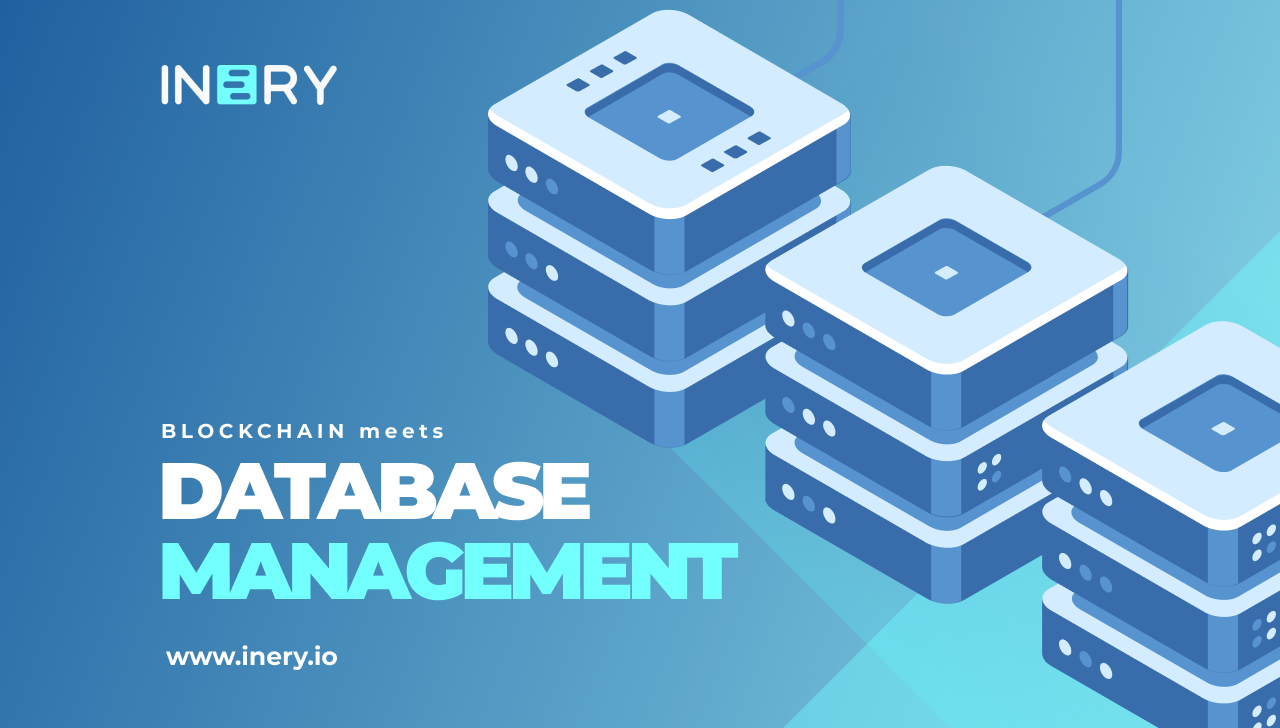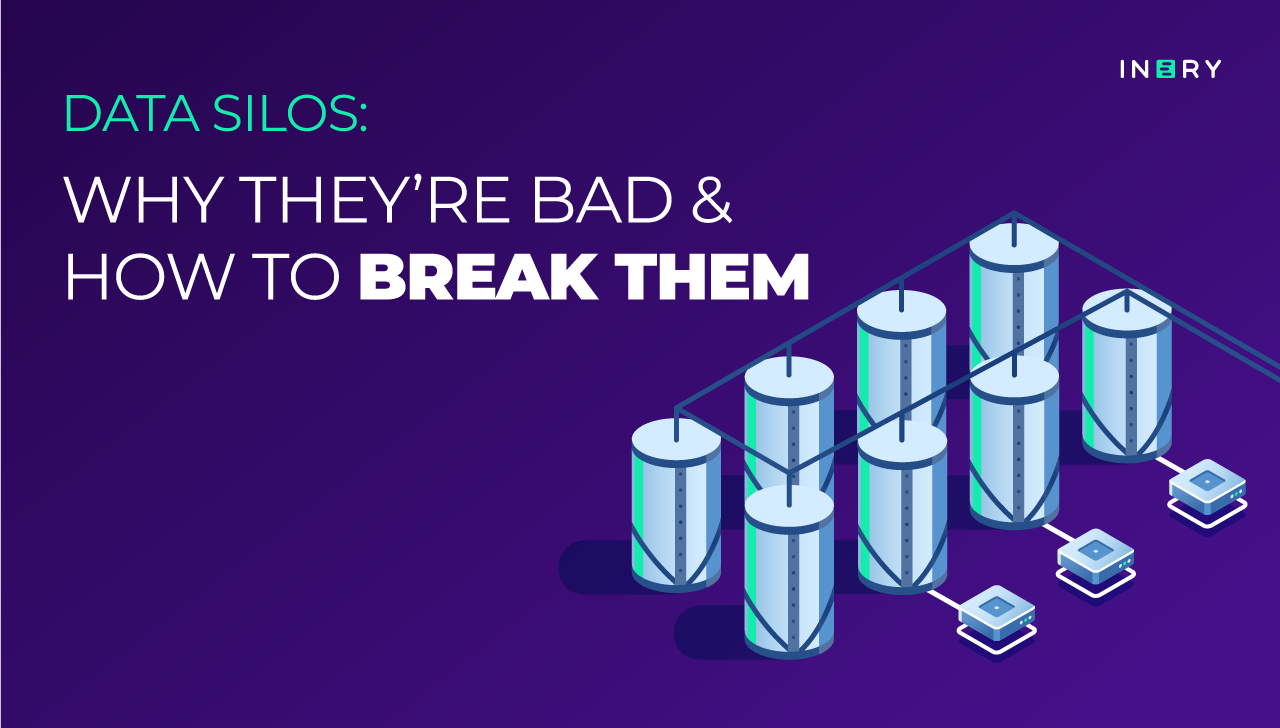Data is dynamic, but it tends to adapt to the overlaying organizational structure of the group that handles it. This quirk leads to data silos, as departments become more independent, isolated, and eventually cut off from one another.
Here, we’ll answer the burning questions people have about data silos:
- What are data silos?
- Why do they happen?
- Are they always a bad thing?
- How to break data silos
What Are Data Silos?
A data silo is a set of data available to an entity in an organization but not to the whole organization. This entity can be anything from a department (HR, customer support, etc.) to a single team or even an individual. The siloed data is in a standalone system, typically incompatible with other sets in the organization.
Here’s a quick example: imagine an organization that has sales and accounting teams. Their jobs are obviously different; thus, they need different data to work. As they accumulate the data they need for their own ends, entirely separate databases are formed. Since they were made to meet their owners’ needs, these data silos aren’t made to be available to the other team: sales can’t access accounting’s data and vice versa.
Why Is This Bad?
Data silos create a whole range of issues within companies, as you’ll see below.
Limited Data View
In a business riddled with data silos, it becomes difficult to get a broad scope of the organization’s data. This makes it more challenging to find inefficiencies that span multiple departments.
Wasted Time, Money, and Resources
It’s harder to retrieve much-needed data from a data silo. The process requires more time, money, and other resources, making it far from optimal.
Poorer Data Integrity
Given its isolation from the broader system, siloed data is more difficult to update. This leads to an increased risk of business decisions made based on faulty data.
Lower-Quality Collaboration
When data is isolated, the departments that hold them become isolated, too. Siloed departments lack the streamlined collaboration capabilities of a data warehouse model.
Poorer Customer Experience
All the confusion in a company’s communication inevitably leads to a poorer product or service. Customer experience worsens as a result—possibly enough so to push consumers toward the company’s competitors.
Some Alarming Data Silo Statistics
To further illustrate why data silos can be problematic, we put together a few pertinent statistics:
- Because of data silos, employees spend an average of 12 hours a week looking for data
- The average organization needs 367 apps to maintain workflow.
- Only 22% of business leaders claim data sharing within their teams is easy and common
- The average company may have over 2,000 information silos
- 50% of employees waste time document diving to find data instead of doing productive work
Data Silos Vs Data Lakes Vs Data Warehouses
A few similar-sounding terms get thrown around when discussing data silos, only adding to the confusion. Let’s clear the air about them here:
- Data silos are isolated databases only used and controlled by one entity within an organization
- Data lakes are shared pools of raw, unstructured data of varying type and complexity
- Data warehouses are shared pools of structured, processed data ready for strategic analysis
Why Do Data Silos Occur?
Info siloing happens for a variety of reasons—some concrete, some more abstract, and difficult to pinpoint.
Different Tech Tools
Naturally, different departments need and use different tech solutions, ranging from CRMs and accounting software to plain old spreadsheets. These solutions don’t always interact and integrate well, which makes data sharing harder.
Company Culture
A highly specialized, quasi-centralized mindset shared by a team causes that team to become more isolated. They might do their individual job well, but their data is cut off from the rest of the organization.
Business/Team Structure
Sometimes, data silos are more of a management problem. Teams that are poorly organized and loosely connected to other departments tend to create data silos.
Large, Sudden Growth
A booming business will not only receive a huge influx of data but also undergo massive organizational changes. Data management tends to get sloppy under such conditions; since data siloing is usually easier, that’s what naturally happens.
When Are Data Silos Good?
To play devil’s advocate for a minute, info silos can actually be beneficial in some cases. Here are a few instances:
- Privacy in data silos is higher, so sensitive information is less likely to get leaked (assuming the appropriate security measures are in place)
- The siloed data may be easier to access for departments that need them the most
However, there are far more downsides to data silos, which is why they’re generally frowned upon.
Breaking Data Silos: Crucial Steps
So, what can we do to break apart silos? The best approach depends on the symptom that caused them. Regardless, below are the most common practices that work in all cases.
Implement Integration Software
A data integration tool will be integral to letting company data stream from department to department.
Depending on the situation, you might need different integration techniques. The three widely recognized kinds of integration (along with their biggest perks) are:
- Manual: custom code; cheaper; greater control over the integration
- Middleware: easier access between systems; better data streaming
- Application-based: simpler; automated
Again, the best tool for the job depends on the circumstances, but here are some popular integration solutions:
- Syncsort
- Salesforce
- Qlik
- Attunity
- Zapier
- SAS
- Adeptia
- SAP
- Actian
Change Business Applications and Approaches
After successfully integrating siloed data, a company has to replace the systems that enabled their creation in the first place. Finding these systems may be tricky, though. Sometimes, a change in management structure can fix the issue; other times, using different tech is the key.
Whatever the case may be, replacing the structure that made data silos is crucial in stopping them from forming again.
Update Old, Siloed Data
Going through and correcting outdated data can be tedious—or downright intimidating if it’s been accumulating for years. Unfortunately, it has to be done, and outsourcing the job might not be an option. But the effort will pay off massively.
Centralize? Why Not Decentralize?
Companies often cite decentralization as the cause of data silos. However, true decentralization, where every stakeholder has access to the same data without relying on a central entity for access, actually eliminates data siloing.
For this reason, a decentralized database management system could be a powerful solution against info silos.
A decentralized data architecture, like that offered by IneryDB, shares data with all network members that can make use of it. This data can be quickly updated to prevent any integrity issues. On top of that, IneryDB provides superior data security and resilience against SPoF (Single Point of Failure).
It may sound counterintuitive at first, but a robust decentralized database infrastructure fixes practically all data silo problems.

Inery•
4 months ago
Inery Tehnical Roadmap 2024
Discover Inery's 2024 Technical Roadmap, a testament to our dedication in revolutionizing blockchain technology. Explore milestones from refining Inery Blockchain V-2.0.0 to enhancing IneryQL and GUI, shaping the future of Web3 with groundbreaking advance ...READ MORE

Share

Inery•
2 years ago
The Architecture for Modern Database Infrastructure
It requires the best-in class tools, stacks and application that sustains the foundation of the next-gen internet. ...READ MORE

Share

Inery•
1 year ago
Flying High With Blockchain in Aviation
Blockchain in aviation adds reliability to a complex industry where the cost of error is sky-high. Click here to learn more. ...READ MORE

Share

Inery•
1 year ago
What The Situation With FTX Taught Us
The downfall of FTX shook up the crypto and blockchain market. Let’s analyze the aftermath and learn some valuable lessons. ...READ MORE

Share
Most popular today



